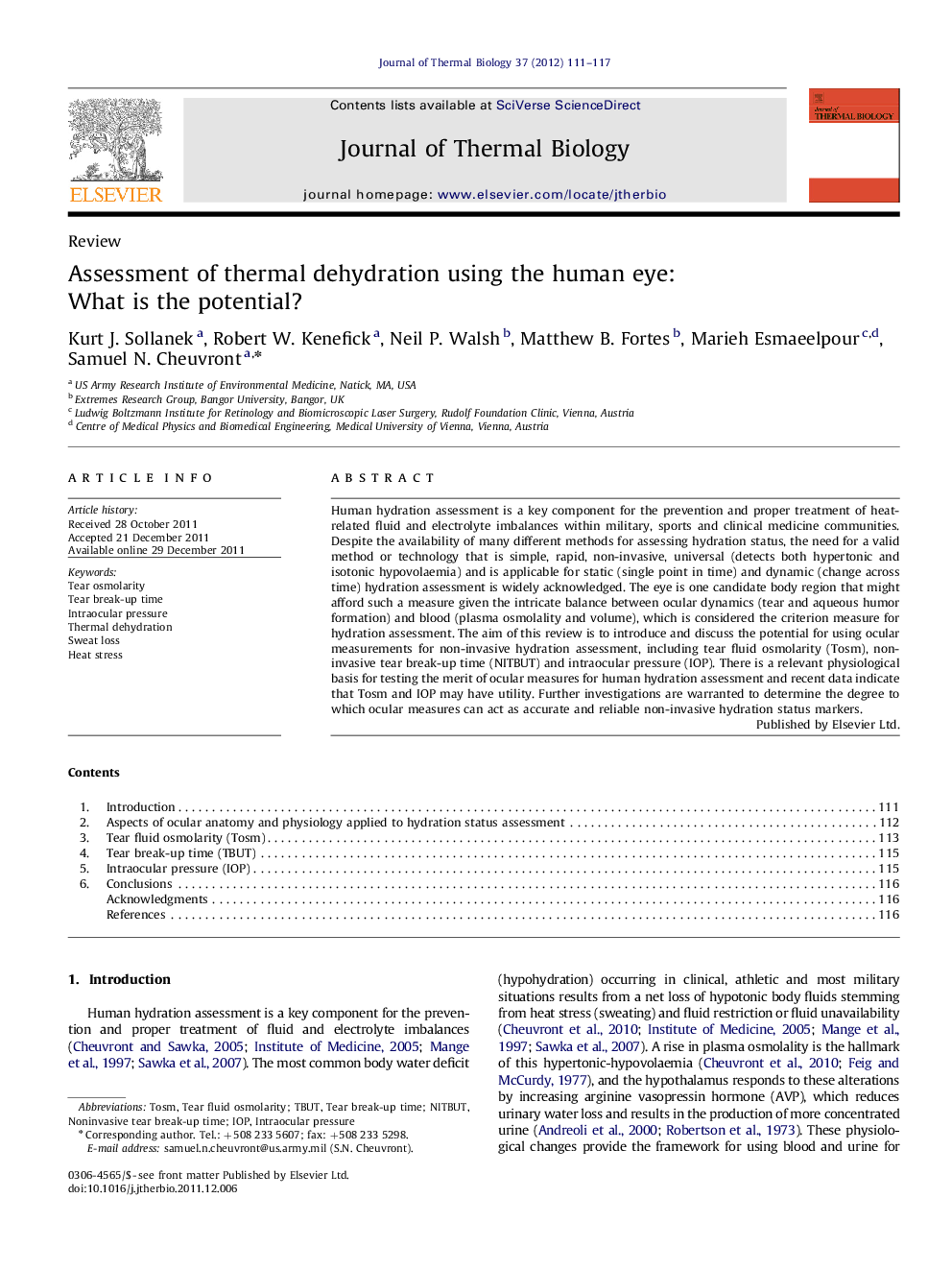| Article ID | Journal | Published Year | Pages | File Type |
|---|---|---|---|---|
| 2843092 | Journal of Thermal Biology | 2012 | 7 Pages |
Human hydration assessment is a key component for the prevention and proper treatment of heat-related fluid and electrolyte imbalances within military, sports and clinical medicine communities. Despite the availability of many different methods for assessing hydration status, the need for a valid method or technology that is simple, rapid, non-invasive, universal (detects both hypertonic and isotonic hypovolaemia) and is applicable for static (single point in time) and dynamic (change across time) hydration assessment is widely acknowledged. The eye is one candidate body region that might afford such a measure given the intricate balance between ocular dynamics (tear and aqueous humor formation) and blood (plasma osmolality and volume), which is considered the criterion measure for hydration assessment. The aim of this review is to introduce and discuss the potential for using ocular measurements for non-invasive hydration assessment, including tear fluid osmolarity (Tosm), non-invasive tear break-up time (NITBUT) and intraocular pressure (IOP). There is a relevant physiological basis for testing the merit of ocular measures for human hydration assessment and recent data indicate that Tosm and IOP may have utility. Further investigations are warranted to determine the degree to which ocular measures can act as accurate and reliable non-invasive hydration status markers.
► The potential for using ocular measures to assess hydration status has been reviewed. ► A sound physiological basis exists for using ocular measures to assess hydration. The methods are tear fluid osmolarity, tear break-up time and intraocular pressure. ► Recent investigations examining tear osmolarity and intraocular pressure show promise. ► Additional research in this area is warranted.
